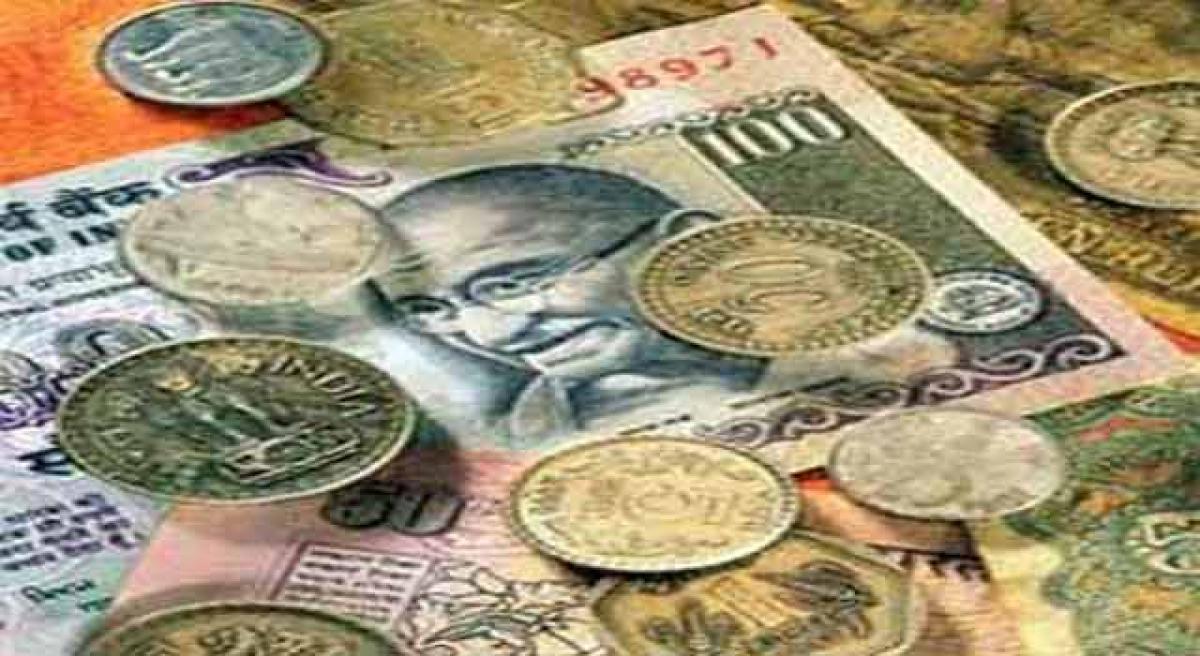Look beyond interest rate cut to spur growth

The Reserve Bank of India (RBI) has cut repo rates by 25 points leading to a new low in interest rates of 6.25 per cent. Petrol price was hiked by Rs 5.26 and diesel by Rs 2.98 in three weeks and price index by some quirk logic hurtles down. Toll in Delhi itself increases from Rs 65 to Rs 100.
The Reserve Bank of India (RBI) has cut repo rates by 25 points leading to a new low in interest rates of 6.25 per cent. Petrol price was hiked by Rs 5.26 and diesel by Rs 2.98 in three weeks and price index by some quirk logic hurtles down. Toll in Delhi itself increases from Rs 65 to Rs 100.
It also comes at a time when the world is rattled by the leak of Panama Papers that expose the globe’s richest parking money at new havens. There is also a revelation by RBI Governor Raghuram Rajan that elections in five States may lead to “money in people’s hands going up by Rs 60,000 crore.” The stock market supposedly a barometer of new steps was cool to the rate cut. Stocks and rupee both lost!
The RBI move has come shortly after the cut in small savings rates – be it PPF, national savings certificates or kisan vikas patra. The new diktat would lead to further cut in deposit rates and hurt senior citizens, housewives and other small depositors real hard. Thus, the poor trying to save some money in banks remains a loser. The unscrupulous rich taking loans have tremendous gain all the way. The Panama Papers expose another reality
The combination is indeed peculiar. Who loses and who gains needs to be assessed. The RBI was under pressure from the industry, which is also the biggest defaulter, to cut rates for “faster growth.” It had never been paying the high interest rates and had even before the present regime of high bank NPAs been defaulting and “restructuring” loans.
The restructuring is a process that leads to renegotiation and waiving usually a part of the accumulated interests – a standard practice so that the principal lent by the banks remain secure. Thus, high interest remains a myth for bulk creditors. For retail small loans, this remains a reality. In short, the poor suffer and the rich gain.
The RBI move has come shortly after the cut in small savings rates – be it PPF, national savings certificates or kisan vikas patra. The new diktat would lead to further cut in deposit rates and hurt senior citizens, housewives and other small depositors real hard.
The RBI states that in March, currency supply increased 48 per cent at Rs 2 lakh crore owing to elections in Assam, West Bengal, Puduchery, Tamil Nadu and Kerala. At the same time, deposit growth came down from 10 to 9.9 per cent, the lowest in 53 years. (A year back the growth was 10.7 per cent). It indicates a declining deposit trend.
The nation needs to look at it as it is despite Prime Minister Narendra Modi’s initiative of JAM – Jan Dhan, Aadhaar and mobile direct cash transfers. Deposit rate fall is an indicator of declining savings – a grave disorder. The trend almost coincided with spiralling inflation since 2009 onwards and bank credit growth of high value loans and default.
This is also the time of high profits registered by corporate, particularly in consumer-related goods. The errors in the pattern still continue. Price index may have come down but prices remain high and are beyond the affordable limit of an average Indian. Consumer companies find the volumes of sales coming down, but strangely they have maintained high profit margins.
Further, the real estate is a classic example. Despite poor demand, fall in sales, spiralling unfinished flats and houses – four lakh unsold units in Mumbai and Delhi-NCR and at least 20 lakh in rest of the places – the prices are being jacked up, a clear move to fleece the common man.
The country’s top listed real estate companies reported nearly Rs 70,000 crore in unsold inventory in March, up from around Rs 64,000 crore a year ago. Here again bank’s deposits are locked. Despite this, Rajan says defaulters’ names are sacred and cannot be disclosed but he doesn’t mind naming and shaming a poor farmer.
The RBI Governor should remember that a liberalised economy is not a licence to loot and rock the basics. Monopolies in every area are growing and the nation has undone the Monopolies and Restrictive Trade Practices Act. The Competition Commission is a lame duck.
Companies going berserk on any count have virtually no law to fear for taming them as was evidenced by the recent scam of non-repayment of over Rs 5 lakh crore loan – simply stated as defalcation of poor man’s money The nation has to correct the fault lines.
Mere reduction of interest rates doesn’t help anyone. Even the 1.5 per cent rate cut since the rates were started to be lowered would result in a reduction of nine EMIs for a 20–year housing loan. One can realise that this would not lure one to buy a flat.
Thus, the poor trying to save some money in banks remains a loser. The unscrupulous rich taking loans have tremendous gain all the way. The Panama Papers expose another reality. Whosoever has some money wants a little higher return. Parking such money in India is not remunerative; experts in the government know it.
Low interest rates lead to losses. Senior citizens are the worst losers so are all other small depositors. So if you keep rates low, savings rate reaches critical level. This apart, the issue of taxes is also there. There is nothing like black money. But if tax rates remain high, those who have money would like to look for safe tax havens.
The remedy is simple. Income tax rates need to be either done away with or brought down to realistic affordable level of around 15 per cent. If corporate tax can be reduced to 25 per cent why also not cut personal income tax. In fact, if income tax is done away with, the government would be saving substantial amount that is spent on running that department, refund of excess tax collected, policing the taxpayer and much more.
The loss would be around Rs 1.75 lakh crore in income tax collection. The reduction in staff and other expenses would also come around Rs 1.5 to 2 lakh crore. The hassle of policing, prosecution and tribunals would be passé. All, leading to an additional saving.
The measures would not only save the government a large sum of money – almost equal to its fiscal deficit – it would also spiral activities and reduce the fear of an oppressive and possible not so honest regime. Similarly, interest rate cut is not a good solution. The US is to increase rates shortly in the wake of better economic activity.
If this happens, there would be many, including foreign institutional investors (FII), who would be soon flying with their money there. India also needs to learn from the Euro area. Low energy prices have supported its activity in an environment, beset with uncertainties.
Indian economy continues to be beleaguered with problems. These are complex and solutions are not easy. But a holistic approach to pinpoint problems, possible solutions and smoothening of process is required than looking for seemingly easy methods.




















